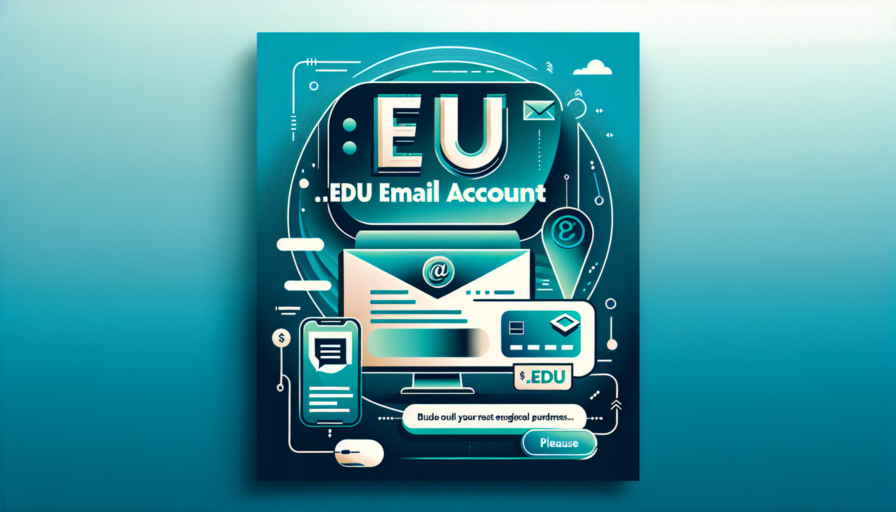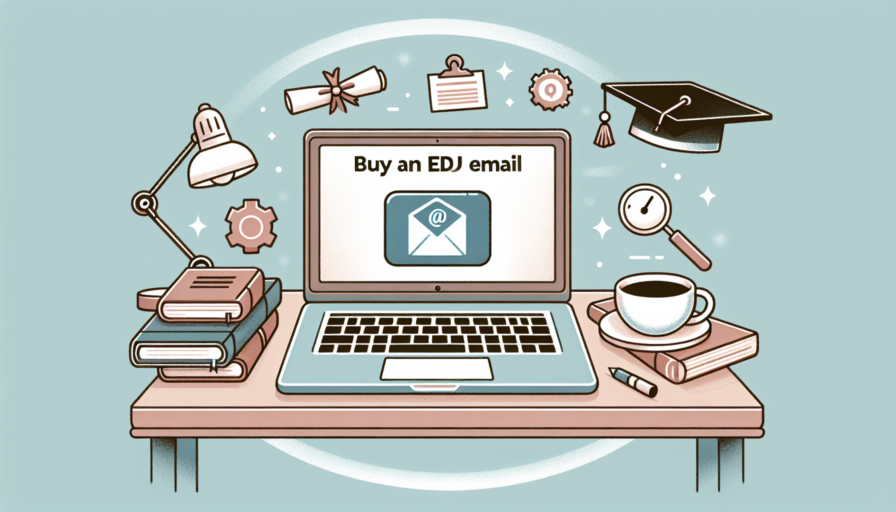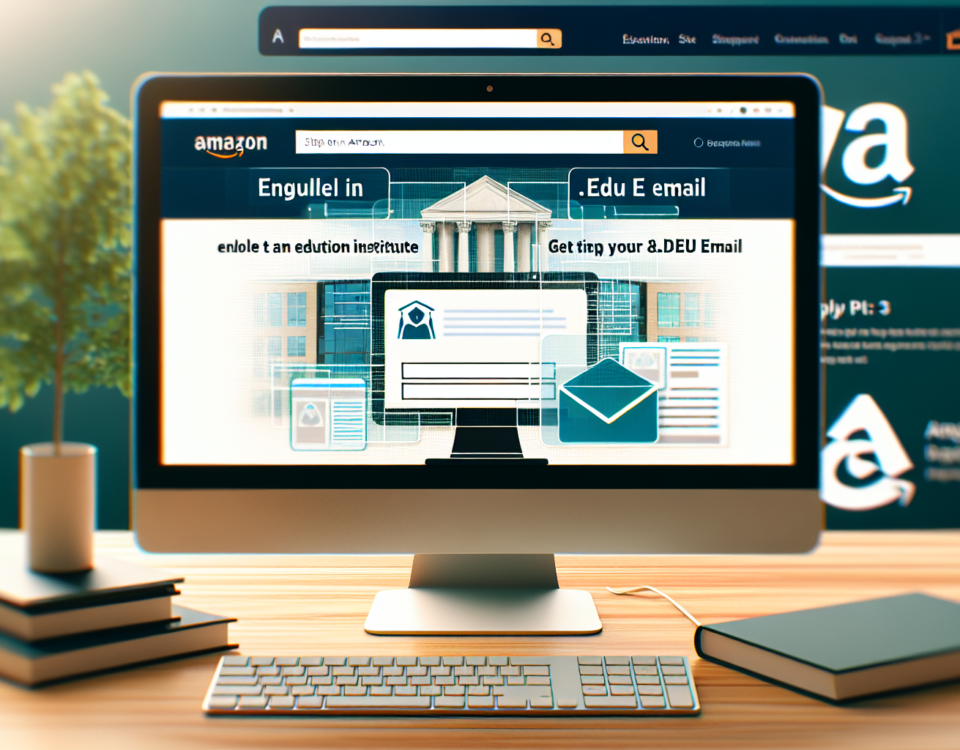Ultimate Guide to Edu Email Login: Access Your Academic Account with Ease
February 15, 2024
Ultimate Guide to Outlook Edu Email: Setup, Benefits & Tips for Students and Educators
February 15, 2024What is a Student Edu Mail and Why You Need One
A student edu mail, known formally as an educational email address, typically ends with a “.edu” domain and is provided by colleges and universities to their students and staff. This type of email address is not just a communication tool; it serves as a digital passport to a myriad of educational resources and exclusive benefits. Having a student edu mail comes with a certain level of credibility and an array of perks that are not available to the general public.
One of the primary reasons you need a student edu mail is for the access to academic resources. Libraries, online journals, and databases often require a verified educational email to allow full access to their catalogues and research materials. This is crucial for any student’s academic success as it opens up a treasure trove of knowledge and scholarly content that would otherwise be behind paywalls or institution walls. Student edu mails often grant users the ability to download and use software and subscription-based services, such as Microsoft Office 365 and Adobe Creative Cloud, at no additional cost.
Beyond academics, a student edu mail can unlock an assortment of discounts and freebies. Companies like Amazon, Spotify, and Apple offer substantial discounts on their services for users with an edu email address. Students can benefit from reduced costs for music and video streaming, tech products, and more. Moreover, having this email proves advantageous for those seeking future employment opportunities, as a .edu address on a resume can verify one’s current status as a student or recent graduate to potential employers, giving credibility and indicating a level of professional preparedness.
Furthermore, a student edu mail is often perceived as a safer and more secure mode of electronic communication, thanks to the educational institution’s IT infrastructure and support. Educational organizations invest in higher email security protocols to protect sensitive information and the identity of their students and staff. As such, when a student uses their .edu address for signups and online interactions, they benefit from enhanced privacy measures routinely updated by the institution, thereby reducing the risk of spam and cyber threats to an extent.
How to Get Your Student Edu Mail Account
If you’re currently enrolled in an accredited educational institution, obtaining your student .edu mail account is an essential step in accessing a variety of academic resources and potential discounts. Educational institutions often provide .edu email accounts to their students, which serve not only as a means of communication but also as proof of one’s academic affiliation. Here’s a straightforward guide to help you get started with setting up your own student .edu mail account.
Eligibility and Verification
First and foremost, to get a student .edu email account, you must be an eligible member of an academic institution. Eligibility usually requires being enrolled in an accredited college or university. After registering for classes, you should receive information from your institution’s IT department regarding the creation of your .edu email account. They will verify your student status, and you may be asked to provide personal details and student identification to ensure that your .edu account is linked to your academic record.
Setting Up Your Account
Once your eligibility is confirmed, the process for setting up your .edu email generally begins on your university’s IT website or through a direct link sent to your current email address. You will typically be guided through a step-by-step process where you’ll select your email ID, create a strong password, and set up security questions. It’s crucial to follow the instructions carefully and jot down your credentials and any backup security information.
Maximizing .edu Email Benefits
After establishing your .edu mail account, remember to explore the full range of advantages it offers. Many educational resources, software companies, and retail businesses provide discounts and special offers to users with a .edu email address. You may have access to free or reduced-price software, subscription services, and library resources. Regularly check your .edu inbox for announcements and opportunities exclusive to students. Using your .edu email responsibly and keeping it active will ensure you remain connected with the academic community and continually receive the benefits associated with it.
Exclusive Offers and Benefits of Edu Mail for Students
Access to Premium Software and Subscriptions
Students who possess an .edu email address have the golden key to unlock a vault of premium software and subscription services. Many top-tier software companies offer their products for free or at heavily discounted rates to those with an edu mail account. For instance, Adobe Creative Cloud, a suite of software that includes industry standards like Photoshop and Illustrator, can be accessed at a fraction of the cost. This affords students the opportunity to develop skills in using professional-grade tools without the financial burden.
Discounted or Free Educational Resources
Aside from software, edu mail users benefit from a plethora of educational resources designed to aid them in their studies. Online platforms like Coursera and edX partner with educational institutions to provide free or discounted courses, spanning a wide range of subjects and skill levels. These resources ensure that students can continue learning outside the classroom environment, expanding their knowledge and enhancing their resumes.
Extended Trial Periods and Cloud Storage
The life of a student is often synonymous with research and projects, which generates a large amount of data necessitating reliable storage solutions. Edu mail accounts often come with extended trial periods for cloud storage services like Amazon AWS Educate or Google Workspace for Education, offering vast amounts of cloud storage and powerful collaboration tools. Such benefits allow students to store their work securely and collaborate with peers efficiently.
Exclusive Shopping Deals and Discounts
Not all the benefits of an edu mail account are directly related to academic pursuit. Students can also enjoy exclusive offers on various products and services including tech gadgets, apparel, and even food. Retailers like Apple and Best Buy offer special pricing on electronics, which can be instrumental for coursework and entertainment. Additional discounts at restaurants and subscription services like Spotify and Amazon Prime allow for a well-rounded student lifestyle without the full financial strain.
Maximizing Productivity: Tools and Services for Edu Mail Users
For educational professionals and students alike, an edu email not only serves as a means of communication but also as a gateway to a plethora of tools and services designed to enhance productivity. Due to exclusive partnerships and programs, edu mail users have access to an impressive suite of applications and services often at substantial discounts or even for free.
One such indispensable service available for edu mail users is the suite of office productivity tools. These include major players like Microsoft Office 365 and Google Workspace for Education. With an edu email, individuals can access word processors, spreadsheet software, presentation tools, and much more. The integration of these applications with cloud services ensures that work can be saved online, facilitating easy access across multiple devices – a must-have for the modern academic environment.
In addition to these versatile office suites, edu mail accounts often enable access to specialized software necessary for certain fields of study. This can range from advanced statistical analysis programs like SPSS or MATLAB, to design software like Adobe Creative Cloud. Unlocking these powerful tools not only enhances a student’s ability to complete coursework but also allows instructors to provide a more dynamic and rich educational experience.
Moreover, productivity extends beyond simply having the right tools; it’s also about managing your time and tasks effectively. Services like Trello, Asana, or Notion offer edu mail users sophisticated task management systems and collaborative platforms that can be leveraged to streamline both individual and group projects. The ability to organize tasks, deadlines, and collaborate in real-time can dramatically heighten efficiency in the educational ecosystem.
Protecting Your Student Edu Mail Account: Tips and Best Practices
Your student edu mail account is a gateway to a myriad of resources and exclusive academic services. It’s essential to maintain its integrity and keep it secure from any unauthorized access. By following several tips and best practices, you can ensure that your account remains protected, thereby safeguarding your personal information and academic work.
First and foremost, it’s imperative to use a strong, unique password for your edu mail account. This password should be a complex combination of letters, numbers, and symbols, making it difficult for potential intruders to guess or crack. Avoid using easily guessable information such as birthdates, names, or common phrases. Regularly updating your password is equally crucial; aim for a change every three to six months to minimize the risk of being compromised.
Another vital practice is to be aware of phishing attempts: fraudulent emails that masquerade as legitimate requests. These can often look as if they have been sent from your university’s IT department, urging you to provide login details or click on suspicious links. Always verify the authenticity of such emails by contacting your IT department directly, and never click on links from untrusted sources. Remember to never share your password with anyone.
Enable two-factor authentication (2FA) if your edu mail system supports it. This adds an additional layer of security by requiring a second form of verification, such as a code sent to your mobile device, in addition to your password. This means that even if your password were to be compromised, the chances of an unauthorized individual gaining access to your account would be significantly reduced. Additionally, make sure that your recovery information, such as a secondary email address or phone number, is up-to-date to facilitate the account recovery process in case you’re locked out.







